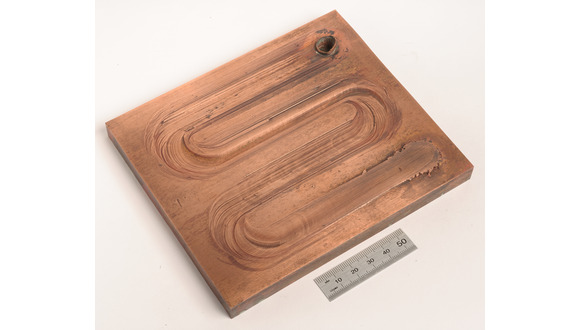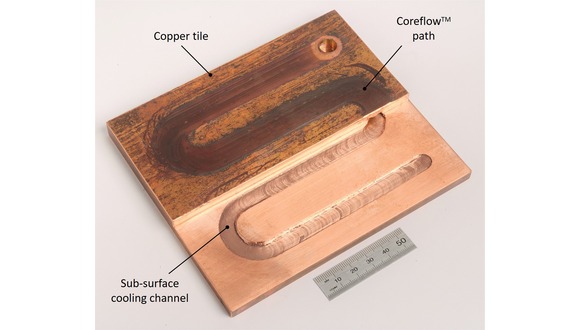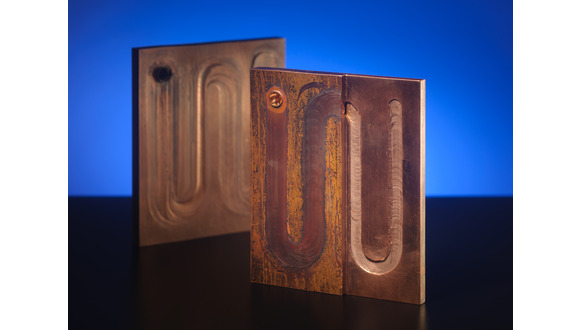Fri, 16 December, 2022
Funding has been secured to investigate the use of the TWI-developed CoreFlowTM technology for atomic fusion assets.
Plasma facing components (PFCs) used in magnetic confinement fusion systems are the first point of contact between the plasma used to create fusion and the chambers in which the plasma is contained. As a result, the PFCs are subjected to high heat flux on the top surface that needs to be actively cooled.
To help with the cooling this PFCs have a substructure with a built-in pipework to dissipate heat. The different materials used on the top surface and within the substructure are currently manufactured and joined together using complex sequences of machining and joining processes.
Traditional methods of associating and embedding cooling networks in fusion structures include gun-drilling and welding/brazing. However, these methods are time-consuming and costly while also incurring a thermal efficiency penalty with the heat being dissipated through many multi-material interfaces and sometimes through limited contact areas. Pipeworks also need to be bent into different configurations that may not be optimised.
Because fusion systems follow a pulsed operating sequence, the components are cycled from ambient to high-temperature operating conditions. This means any joints need to be able to withstand large stresses caused by differential thermal expansion between the materials.

The TWI-developed CoreFlowTM technology, which is derived from friction stir welding, could prove to be the solution to this challenge through the integration of sub-surface networks while leaving the external surface of a component intact. These channels feature a flat bottom surface and well-defined edges that could suit PFC heat sink requirements.
By machining the cooling channels directly into the component CoreFlow™ provides a fast and efficient integrated method to dissipate heat from a part without having to add pipework, gaskets or other complex and costly solutions.
Early investigations into the use of CoreFlowTM for PFCs has shown that copper tiles can be processed with this technique, however future work is now planned to optimise the process and advance the Technology Readiness Level for this new function.

The new project will mature the process so that it can be used as building block for future fusion energy system developments and help to make fusion power commercially viable.
The project will seek to progress the technology readiness level and create a representative component or system while working towards achieving certification and regulatory approval.
The project has already seen some promising results, so we will provide more updates soon. You can also find out more about CoreFlowTM here.
